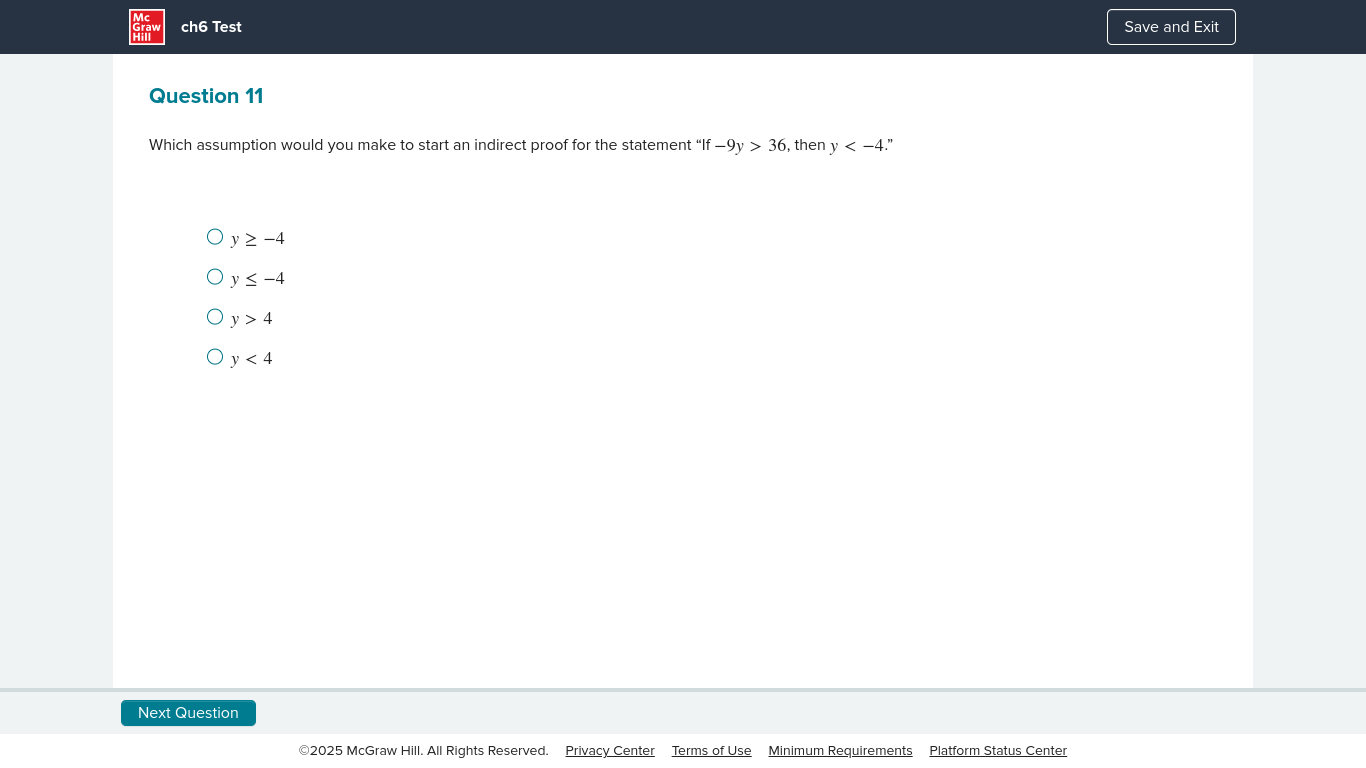Which assumption would you make to start an indirect proof for the statement "If -9y > 36, then y < -4."

Understand the Problem
The question is asking which assumption is needed to initiate an indirect proof for the mathematical statement involving inequalities. The user needs to choose one of the four provided options based on logical reasoning related to the statement given.
Answer
$y \geq -4$
Answer for screen readers
The assumption needed to start an indirect proof is $y \geq -4$.
Steps to Solve
-
Understand the statement to prove The statement to be proven is "If $-9y > 36$, then $y < -4$." We will prove this by starting with the opposite assumption of what we want to show.
-
Assume the opposite of the conclusion To use indirect proof, assume the opposite of the conclusion, i.e., assume $y \geq -4$.
-
Use the assumption in the initial condition Substitute this assumption into the inequality $-9y > 36$. If we assume $y \geq -4$, we must check what happens:
- We multiply both sides of $-9y > 36$ by $-1$ (which flips the inequality): $$ 9y < -36 $$
-
Check if the assumption leads to a contradiction Now, dividing by $9$ gives: $$ y < -4 $$ This contradicts our assumption that $y \geq -4$. Therefore, our assumption must be incorrect.
The assumption needed to start an indirect proof is $y \geq -4$.
More Information
In an indirect proof, assuming the opposite of what you want to prove often leads to a contradiction. In this case, by assuming $y \geq -4$, we find that it conflicts with the derived condition $y < -4$, which is essential for the proof.
Tips
- Assuming the conclusion instead of its opposite can lead to incorrect proof techniques.
- Not properly flipping the inequality sign when multiplying or dividing by a negative number may lead to false conclusions.
AI-generated content may contain errors. Please verify critical information